Spider plants (Chlorophytum Comosum) are one of the best houseplants for beginners. They are relatively easy to grow and require minimal plant care. Even in tough environments, the spider plant can grow and flourish.
Otherwise referred to as spider ivy or the airplane plant, they can be recognized by their long and narrow leaves. Healthy spider plants are a vibrant green/blue colour with streaks of yellow. Surely, this can brighten any living space.
Once they grow for an extended period of time, they start to produce spiderettes which can be propagated and turned into an entirely new plant.
Originally from South Africa, they are not only beautiful, but they also have many air-purifying properties. This can reduce stress, headaches, and chronic illness while increasing concentration.
In feng shui, spider ivy is even said to bring good fortune, health, and prosperity.
If you’re searching for a guide to grow and care for your spider plant, look no further. Below are all the tips and tricks you need to help your plant thrive!
Spider Plant Facts
| Scientific Name | Chlorophytum comosum |
| Common Names | Spider Plant, Spider Ivy, Airplane Plant, Ribbon Plant, Bonnie’s Ivy |
| Genus | Chlorophytum |
| Family | Asparagaceae |
| Type | Household, perennial, herbaceous |
| Height | 1-2ft |
| Width | 1-2ft |
| Native to | Africa |
| USDA Plant Hardiness Zone | 9-11 |
| Flower Colours | White, yellow, cream |
| Foliage | Variegated, yellow and green, long and narrow, ribbon-like |
| Climate | Tropical to cool temperature |
| Soil Type | Well-drained, loamy |
| Soil pH | Neutral |
| Sun Exposure | Indirect light, bright, partial shade |
| Water | Moist to dry soil condition |
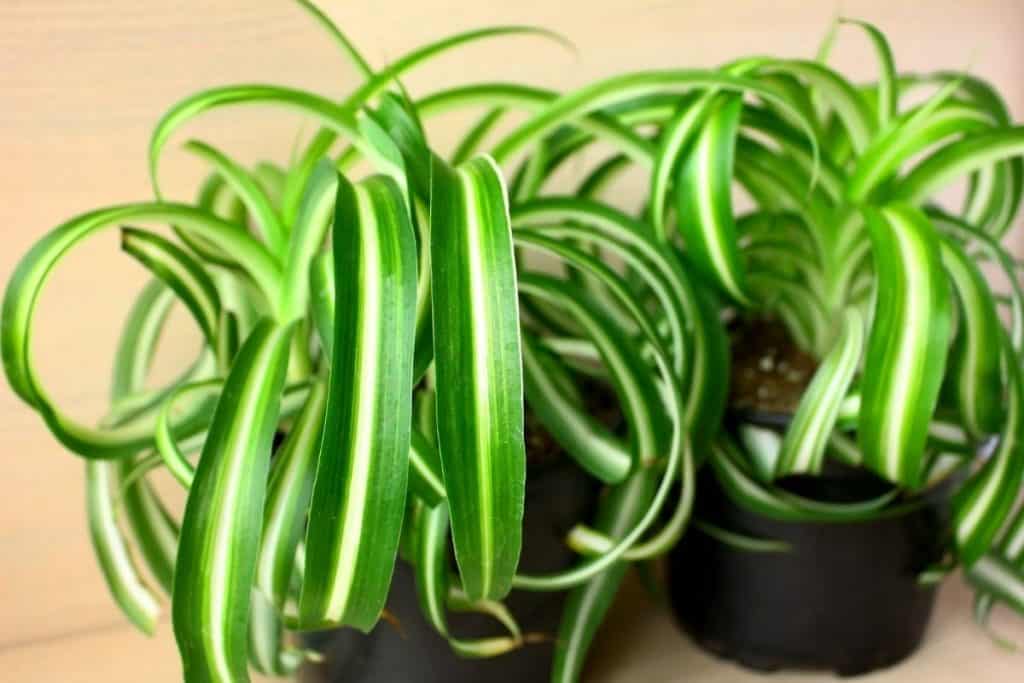
Proper Spider Plant Care
Fortunately, they are incredibly easy to grow and maintain. They require little attention and can thrive in most environments. If you’re a busy person, this plant makes a fantastic choice.
With proper soil, water, and light, they can live upwards of 50 years.
Soil
The ribbon plants prefer to grow in loamy soils with good water drainage. This type of soil helps prevent root rot and overwatering. Additionally, they prefer a neutral soil pH.
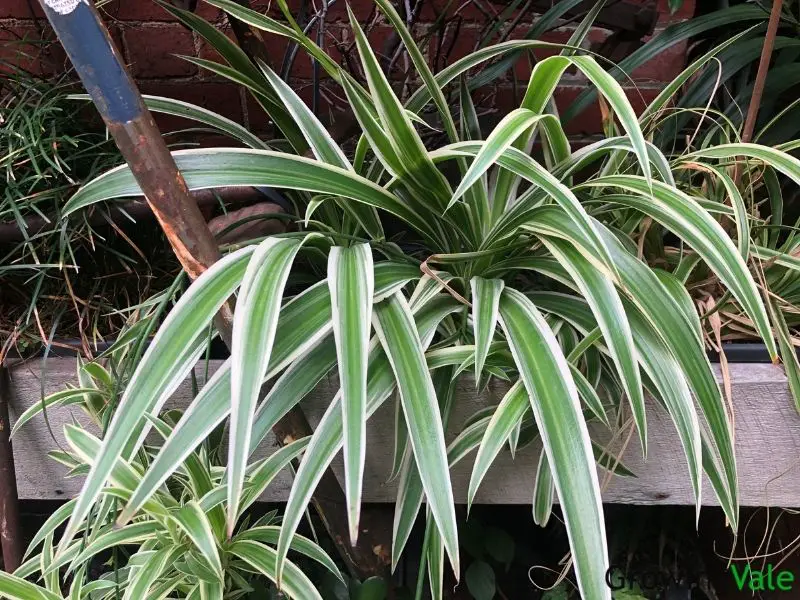
Water
Spider plants need to be watered roughly every one to two weeks. Although they do well somewhat moist, it is important to avoid overwatering. Letting the plant dry out between each watering is often best.
Using distilled water if possible is ideal for these plants because they can become damaged by chlorine and fluoride. Rainwater can also be used.
Fertilizer
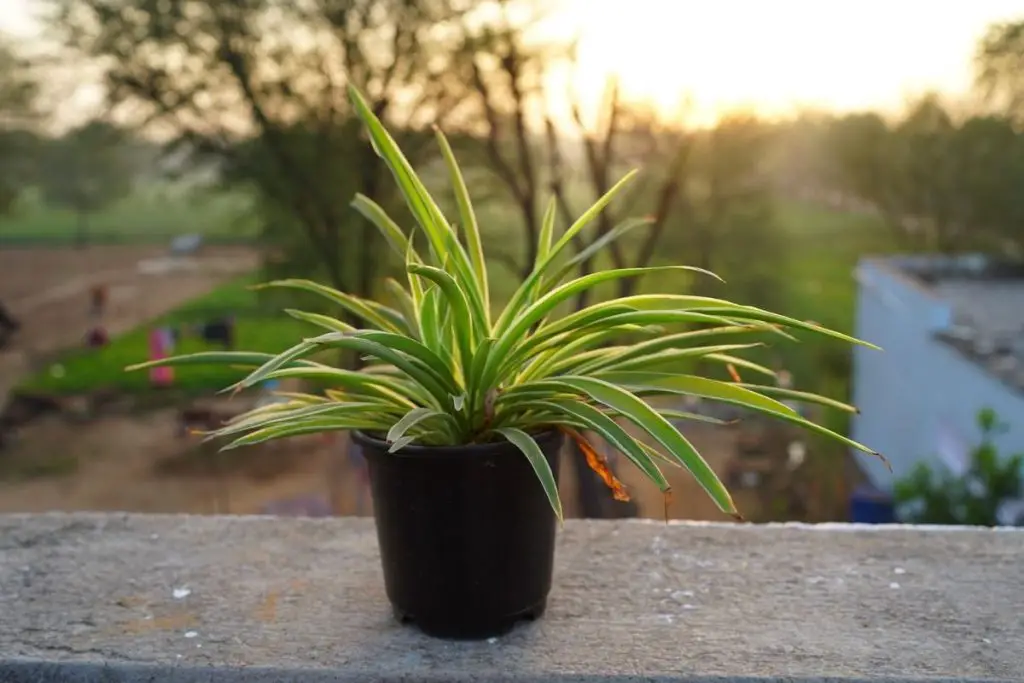
All-purpose granular or water-soluble fertilizer works well for spider plants. Both of these fertilizers offer a moderate amount of fertilization without being too weak or strong.
If you notice a drastic decrease in plant growth, lessen the amount you are using to avoid salt build up. Additionally, they only need to be fertilized during the growing season (spring to fall).
Sunlight
Spider plants like to live in bright areas with indirect sunlight. Putting your plant directly in the sun may burn and crack the leaves. Spaces with consistent indirect sunlight will help the plant grow healthily and quickly.
Although they can survive living in shade, they will not grow as quickly and may not become as full compared to plants that get proper sun exposure.
Pests and Disease
If the foliage on your plant is wilting and dying off, this may be an indication of an infestation. The great news is that aphids, mealybugs, and scales can easily be removed. One of the most effective ways to get rid of these pests is by rinsing the plant with water. In the case of a more serious infestation, an insecticide can also be used.
Propagation of Spider Plants
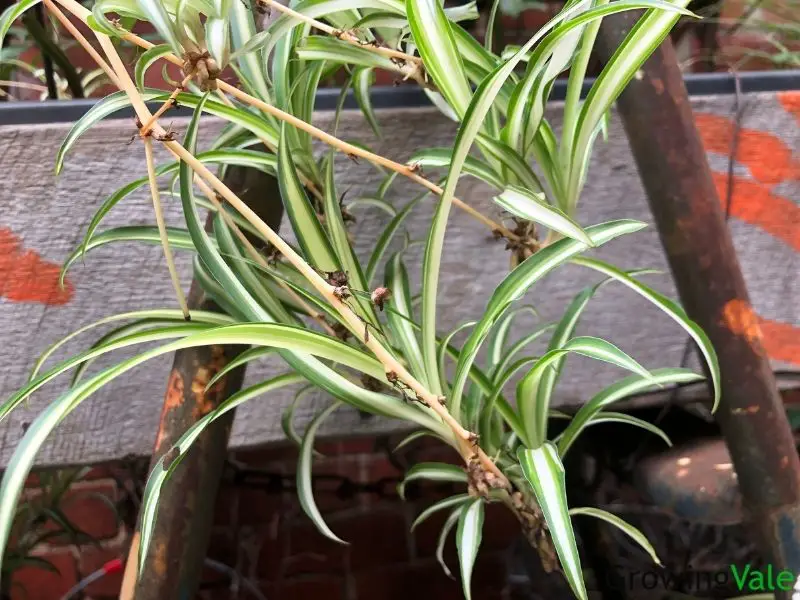
Spider plants are one of the easiest household plants to propagate.
Once you notice your mother plant growing spiderettes, pick one and place it into a small pot next to the mother plant. At this stage, keep the spiderette attached to the mother plant.
When the spiderette becomes rooted in its new pot (roots about an inch or two long), cut it away from the mother plant and you have officially made a new plant. It really is that easy!
Alternatively, you could root the spiderette in water; however, soil does work better. You could also cut the spiderette from its mother right at the beginning but this may slow its growth.
See our detailed guide how to propagate spider plant for all the methods you can follow.
Potting and Repotting
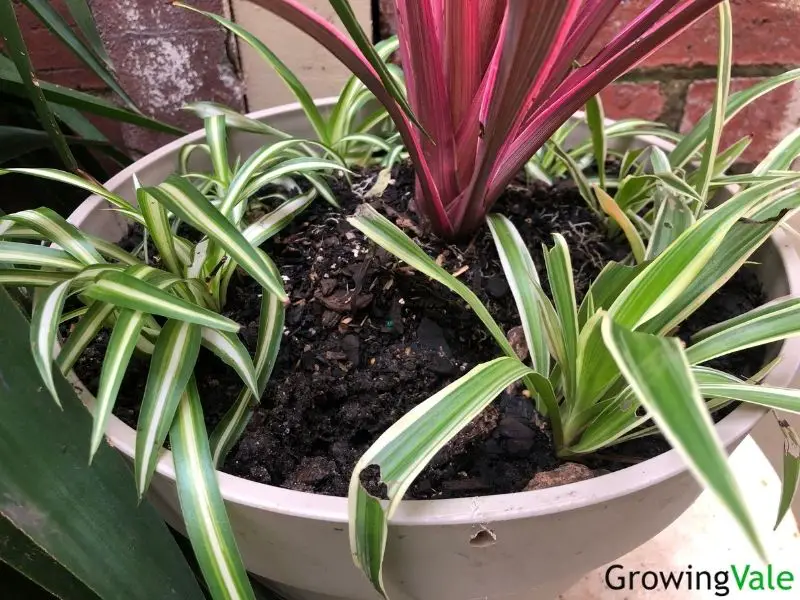
These plants need to be repotted about once every two to three years. Once you notice the roots protruding out of the bottom of the pot, you know it’s time to change pot sizes.
They should grow in containers that are about 1 to 2 inches larger than their roots. This will give them plenty of space to grow.
Because it is the start of the growing season, repotting the spider plants in the spring is preferable.
When removing the plant, make sure to be careful. Dropping it or accidentally breaking off its roots may lead to permanent damage. Once it has been placed gently, fill the pot with fresh soil.
Pot Type
There are two important factors to consider when choosing the right pot to grow your spider ivy: the material and the type.
Because these plants need to be well-drained, a terracotta pot works excellent. Try to find a pot with holes in the bottom or simply drill holes if necessary. In order to avoid root rot, don’t use a plastic container.
Spider plants tend to cascade over their pot which can lead to their leaves getting crushed. This can be avoided by placing your pot somewhere high or putting it in a hanging basket.
Alternatively, you could root the spiderette in water; however, soil does work better. You could also cut the spiderette from its mother right at the beginning but this may slow its growth.
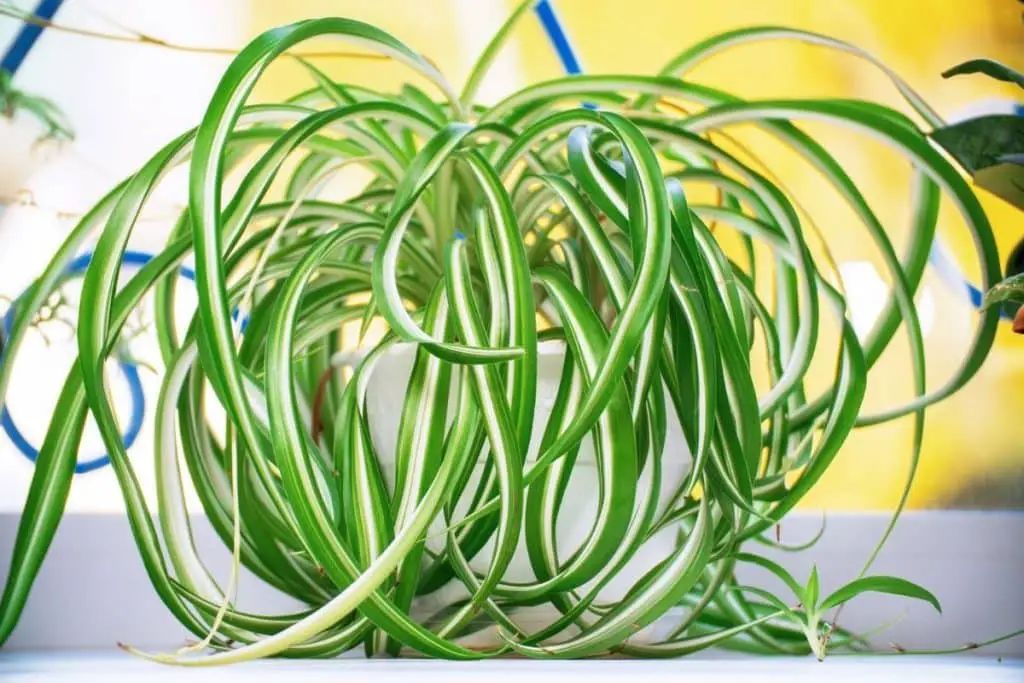
Humidity and Temperature
Humidity and temperature can play another vital role in the growth of your plant. If the environment is too cool, your plant may freeze. Consider moving it away from windows in colder seasons and away from any air conditioning vents.
These plants prefer warm temperatures and humid conditions. They can withstand anywhere from 50-90 degrees Fahrenheit but do best around 70-90 degrees Fahrenheit.
They also prefer a humid environment. Misting the plant every once in a while or placing it next to other plants allows for proper humidity.
Can Spider Plants Live Outside?
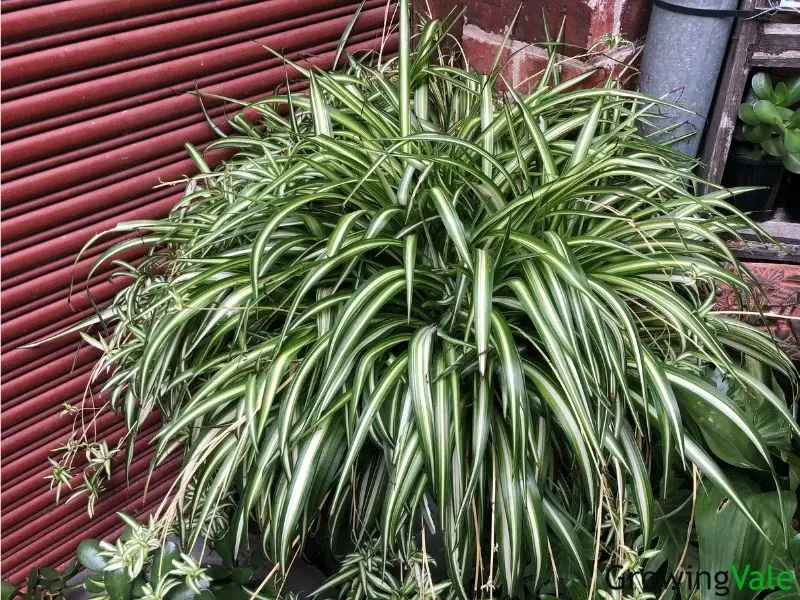
Even though it is commonly grown as an indoor plant, you can still grow spider plants outdoors in most climates. Make sure you choose a location that is not in direct sun to avoid burning its leaves.
Common Issues With Spider Plants
Brown Leaves
The most common problem when it comes to growing spider plants is browning leaves and brown tips. Thankfully, this does not mean your plant is dying. Leaves tend to brown due to water issues.
This could be a sign of overwatering, underwatering, or salt build up.
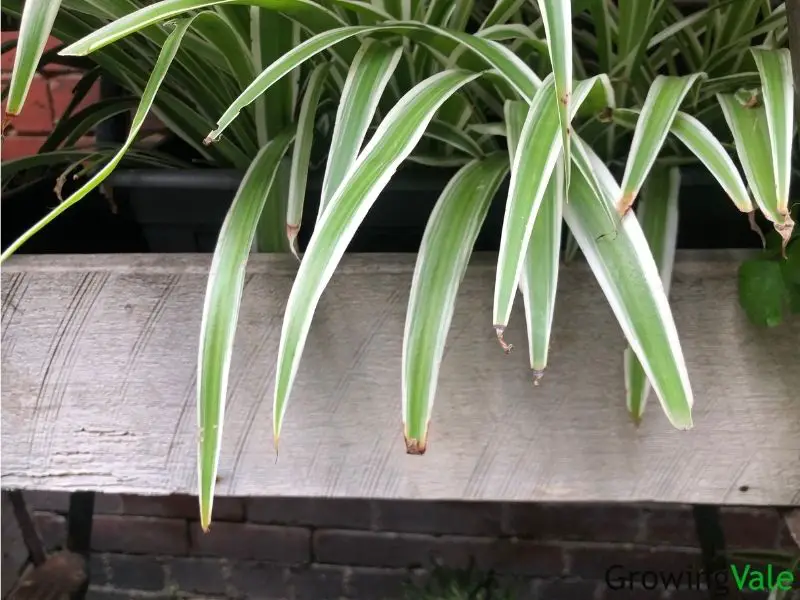
Overwatering can be resolved by repotting the plant into a terracotta pot, changing the soil to a more loamy mix, and/or letting the soil completely dry between waterings.
Underwatering can be fixed by checking the soil at least once a week. Do this by poking the soil with your finger about an inch or two deep. This will give you an accurate idea as to if it is too dry.
Salt build up can occur because of fluoride or chlorine in the water you’re using. Change to distilled water or rainwater. Over fertilizing the plant can also cause salt and mineral build up. Consider adjusting your fertilizer or lessen the amount you use.
Lastly, brown leaves may be an indication of a dry environment. To increase humidity, try misting the plant and placing it next to other plants.

Slow Growth
A spider plant’s growth tends to become stunted when in an incorrectly sized pot. When the pot is too large, the plant may tip over or become water-logged. Simply repot the plant and place it in a smaller container. This will allow the plant to grow at its normal rate.
Another problem affecting the plant may be the amount of sunlight it’s receiving. If the plant lives in shade, consider moving it to somewhere brighter.
Toxicity
The airplane plant is not known to be toxic to dogs and cats.
Conclusion
With the right care, spider plants can live a long and prosperous life. Although they are resilient in most environments, implementing a strong plant care routine will allow them to greatly flourish!
See more: Types of Spider Plants and Spider Plant Flower
~ image source: depositphotos/pro2audio.gmail.com&missspring&thalabhula

